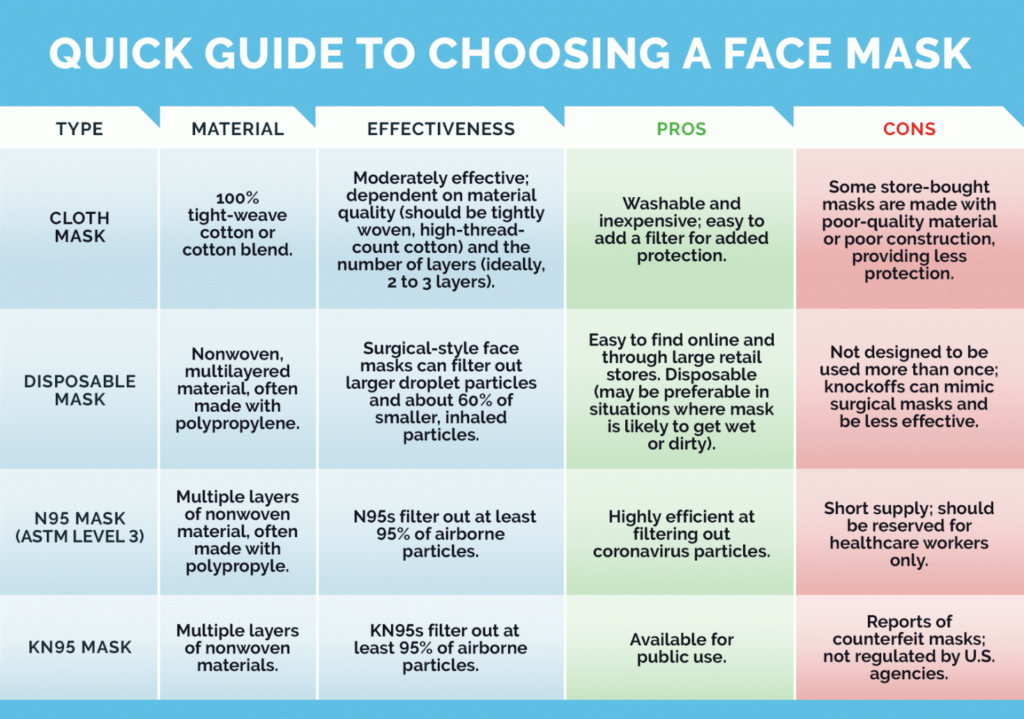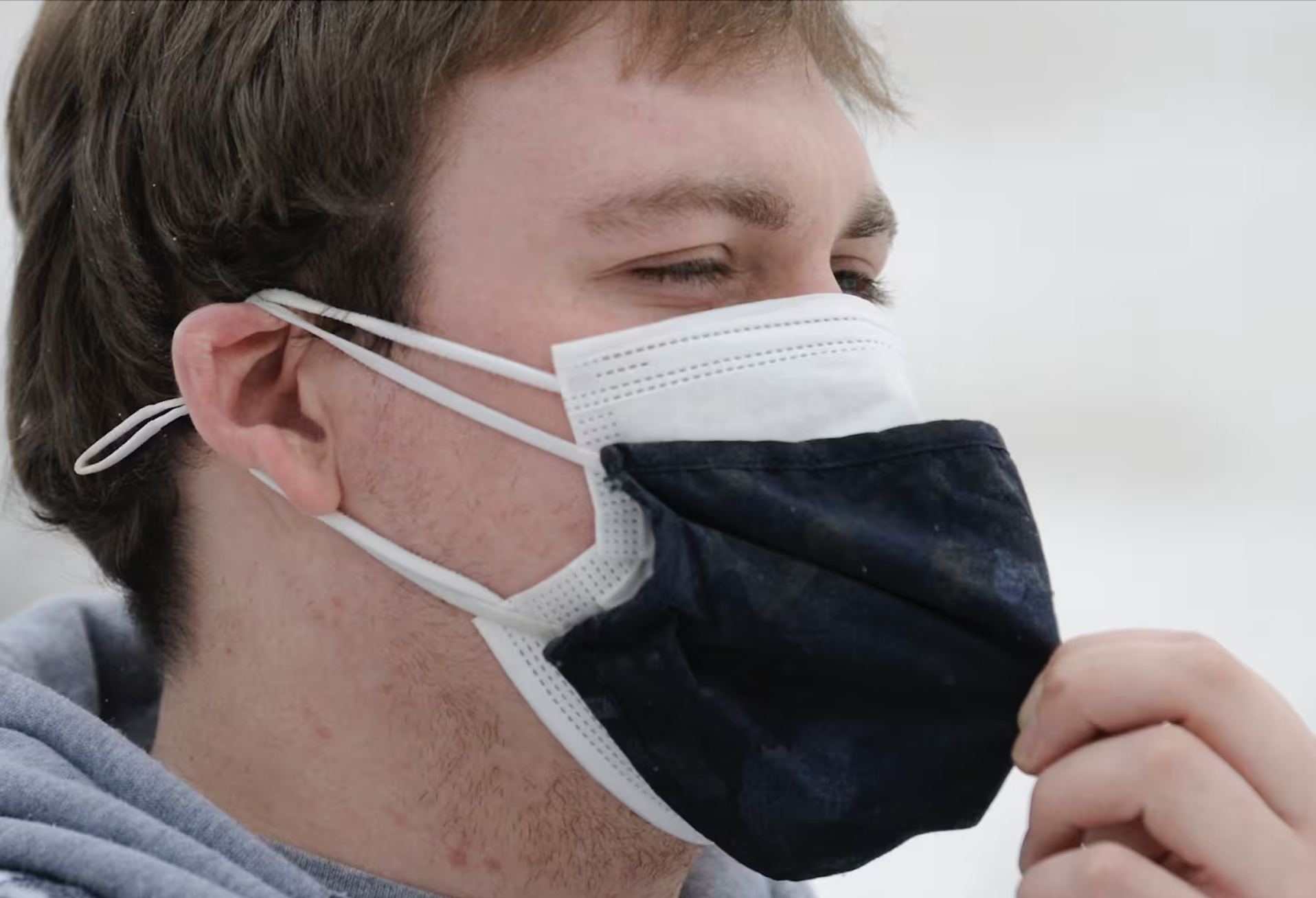Upgrade your mask to higher-level medical or surgical grade mask to reduce the risk of catching & transmitting COVID-19. We recommend double masking with a medical mask or wearing a KF94, N95, or KN95 mask for the best protection.
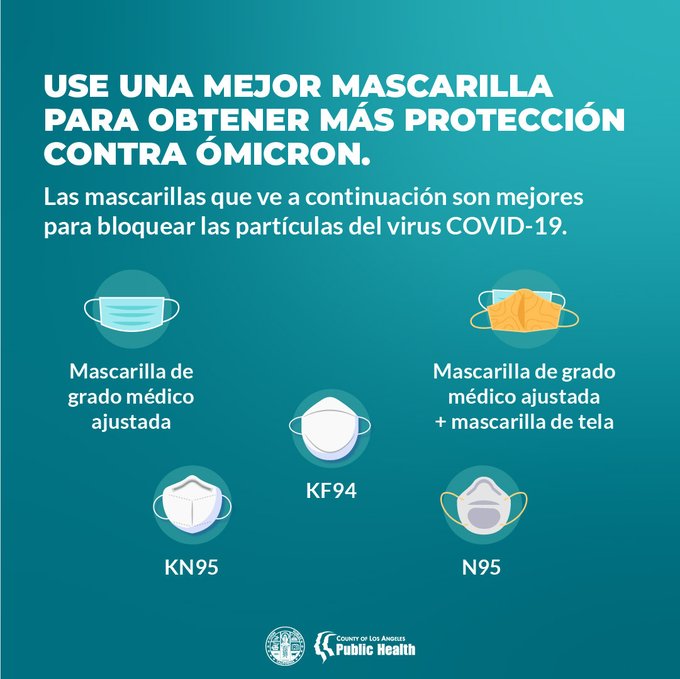
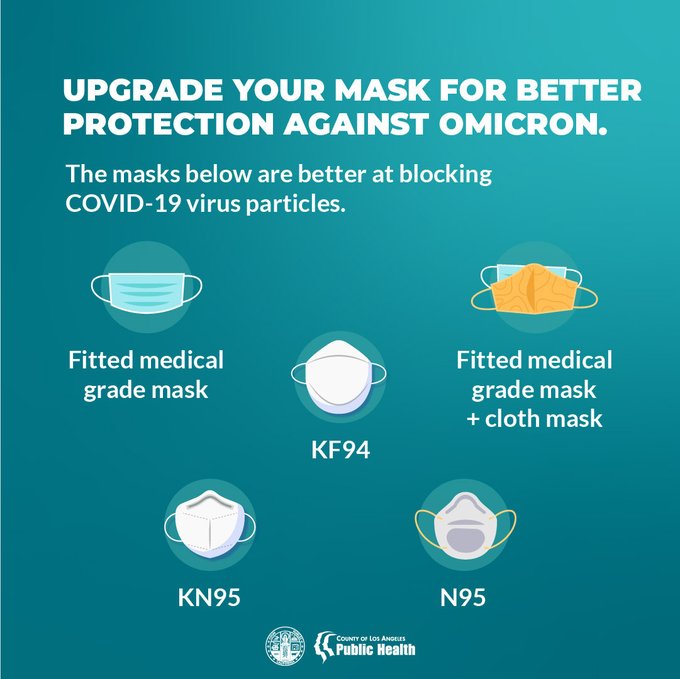
More Than 40% of Chronic Illness Patients Often ‘Double Mask,’ According to New Poll
PUBLISHED 03/12/21 BY Leah Rocketto
Learn more about our FREE COVID-19 Patient Support Program for chronic illness patients and their loved ones.

More people are getting the COVID-19 vaccine by the day, some U.S. states have started lifting pandemic restrictions, and the U.S. Centers for Disease Control and Prevention (CDC) recently issued new recommendations for fully vaccinated people. So that means people can start letting their guards — and masks — down, right?
No. While things are looking more optimistic than they have in some time, the COVID-19 pandemic is still far from over. To keep numbers moving in the right direction means continuing to wear face masks, social distance, and take other precautions. In a recent interview with the Wall Street Journal, CDC Director Rochelle Walensky, MD, emphasized that “when prevention measures like mask mandates are rolled back, cases go up.”
Because of this, the CDC continues to stress the importance of not only wearing a face mask, but ‘double masking’ with a medical and cloth mask for extra protection, given that more contagious strains of the virus continue to emerge and circulate.
Many people with chronic illness seem to be following this recommendation. In a recent survey conducted by the Global Healthy Living Foundation (GHLF) of its COVID-19 Patient Support Program, 63 percent of 2,153 respondents said they double mask in some capacity, while 37 percent of respondents said they never double mask.
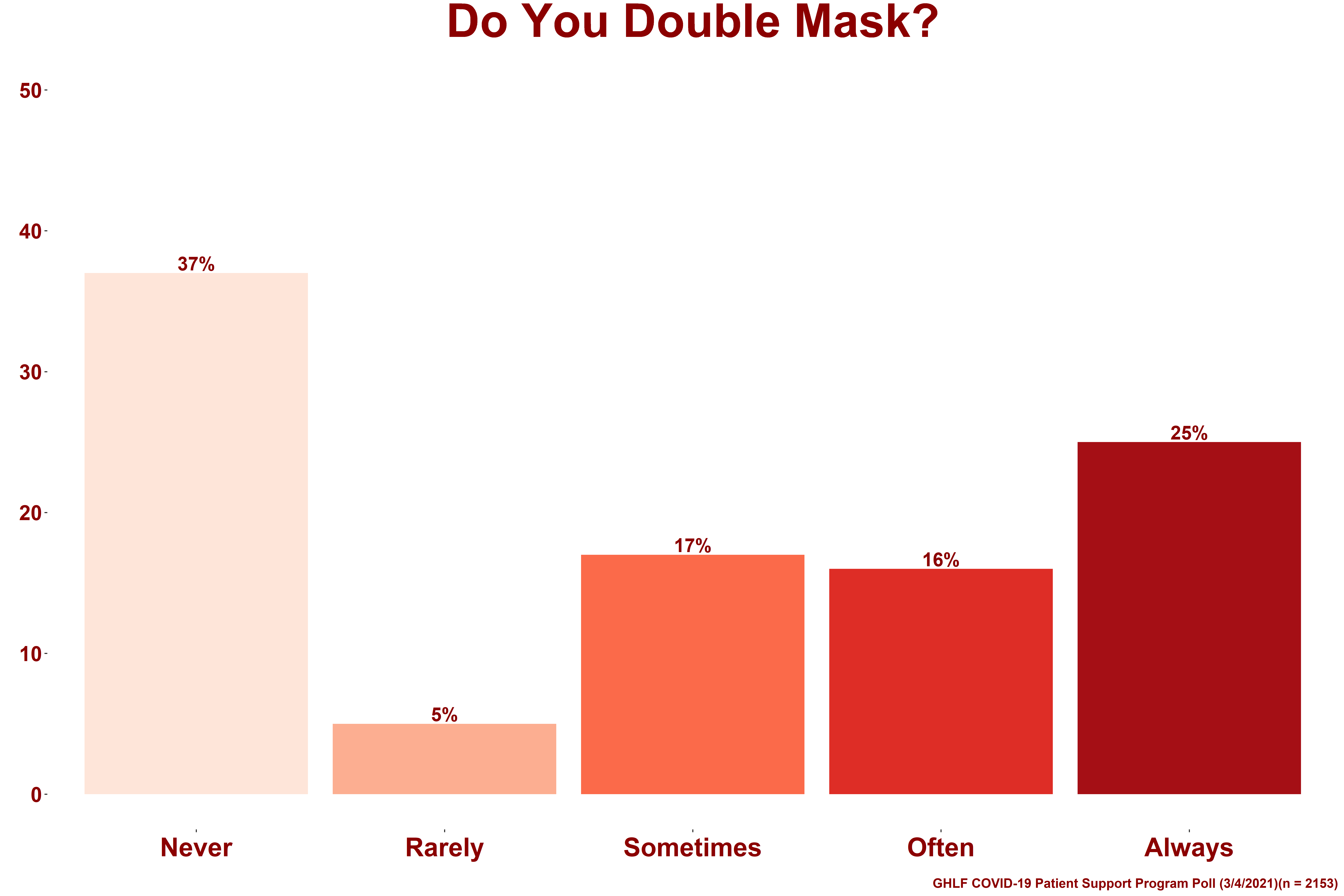
The GHLF COVID-19 Patient Support Program a group of people living with medical conditions that make them immunocompromised or high risk for COVID-19 complications. The survey, which was conducted March 4-11, 2021, aims to shed light on the perspective of chronic illness patients during the pandemic.
Here are more insights from the survey data.
Many people double mask; most started doing so recently
Among those who ever double mask (1,357 respondents), here’s how often they report doing so:
- 25% of people always double mask
- 16% of people often double mask
- 17% of people sometimes double mask
When asked when they would double mask, more than half of people (53 percent) said they always do so when they’re outside of the house.

Among those who don’t double mask, difficulty breathing and discomfort are common reasons
Though the majority of patients surveyed said they double mask, 37 percent of respondents said they do not. Here are some of the common reasons (participants could select more than one answer):
- It’s harder to breathe (41%)
- One mask provides enough protection (32%)
- It’s uncomfortable (16%)
- I wear an N95-style mask in public (12%)
Some 14 percent of patients felt that double masking was not necessary because they were already vaccinated.
Just 6 percent of respondents had not heard about double masking until taking the survey.
Double masking, though uncomfortable, can provide extra protection against COVID-19
Double masking may not be as pleasant, but research suggests it can significantly reduce your exposure to COVID-19.
A February study published in the U.S. Centers for Disease Control and Prevention (CDC) Morbidity and Mortality Weekly Report found that exposure to potentially infectious aerosols dropped by about 95 percent when both the source (an infected person) and receiver (someone standing nearby) wore tightly fitted masks.
Finding a perfectly fitted mask, however, can be a challenge. This is where double masking comes in. When you wear a cloth mask over a medical mask, you push the edges of the disposable mask against your face, creating a more protective barrier, which reduces the spread of coronavirus germs COVID-19.
Will double masking continue to be advised as the pandemic continues? Recommendations may change as we learn more about the impact of coronavirus variants and more people getting vaccinated. For now, it can’t hurt to consider double masking when you will be in higher-risk situations that expose you to a lot of people outside your household, especially where there are crowds or poor ventilation.
Get Free Coronavirus Support for Chronic Illness Patients
Join the Global Healthy Living Foundation’s free COVID-19 Support Program for chronic illness patients and their families. We will be providing updated information, community support, and other resources tailored specifically to your health and safety.
About the Patient Support Program Quick Poll
Members of our program have underlying health issues — such as inflammatory arthritis and other autoimmune conditions, heart disease, lung disease, diabetes, and more — that may increase their risk for COVID-19 complications. They are interested in understanding the best ways to stay safe during the pandemic and to be part of a community of people with similar concerns, questions, and fears.
We regularly poll members, who live in the U.S. as well as around the globe, about a variety of topics, including how the pandemic is affecting their lifestyle, mental health, chronic disease management, medication adherence, and more.
We use this information to inform the educational resources we provide and to inform other stakeholders — such as public health experts, policymakers, advocacy groups, health care professionals, and pharmaceutical companies — about chronic illness patients’ needs and concerns. You can participate in ongoing polls by joining the support program here.
How ‘Double Masking’ with a Medical and Cloth Mask Could Better Protect You From COVID-19
PUBLISHED 02/13/21 BY Kelsey Kloss
Daily Living During COVID-19
Tighter-fitting masks offer more protection against coronavirus germs, research shows. And doubling up on masks is a good way to ensure your face masks fit more snugly to better prevent COVID-19.
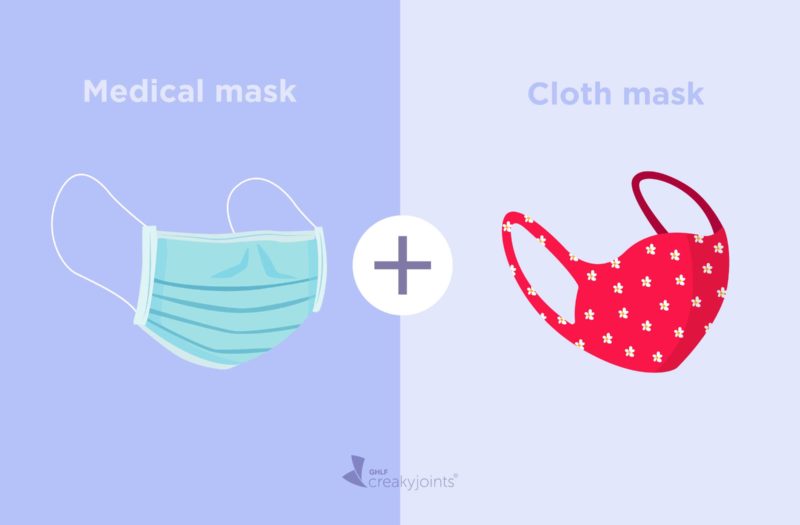
You already know the drill: Wear a face mask whenever you’re around others who don’t live in your household and practice social distancing (staying six or more feet apart) too. But if you’ve also been doubling up on masks — wearing a medical mask covered by a cloth mask — out of an abundance of caution, research now confirms what you may have guessed: This practice helps protect you better from COVID-19 than wearing only one mask.
In lab tests with dummies, researchers found that exposure to potentially infectious aerosols dropped by about 95 percent when both the source (representing an infected person) and receiver (representing someone standing nearby) wore tightly fitted masks — achieved by either wearing a cloth mask over a medical procedure mask (photo B below) or wearing a medical procedure mask with knotted ear loops and tucked-in sides (photo C below) — compared to no mask at all, according to a new study published in the U.S. Centers for Disease Control and Prevention (CDC) Morbidity and Mortality Weekly Report.
These methods were much more effective than wearing an unknotted procedure mask that left room for gaps around the face (photo A below). Cloth masks and medical procedure masks fit more loosely than respirators like N95 masks, which the CDC still discourages for the general public since they need to be reserved for health care workers.

Double masking or knotting and tucking a medical mask helps it fit to your face better, so infectious particles have a lower chance of escaping or entering your mask.
The study included two experiments: The first observed the effects of exposure via simulated coughing, while the second looked at exposure risk with simulated breathing.
In the first experiment that simulated coughing, the researchers found that:
- Wearing an unknotted medical procedure mask alone blocked 42 percent of the particles from a simulated cough from the source, while wearing a cloth mask alone only blocked 44.3 percent of particles.
- However, wearing a cloth mask over the medical procedure mask (double mask) blocked 92.5 percent of cough particles from the source.
In the second experiment that simulated breathing, the researchers found that:
- Double masking or knotting and tucking a medical procedure mask on the source reduced the cumulative exposure of an unmasked receiver by 82.2 percent and 62.9 percent, respectively.
- When the source was unmasked and the receiver was fitted with either a double mask or the knotted and tucked mask, the receiver’s cumulative exposure was reduced by 83 percent and 64.5 percent, respectively.
- Finally, when the source and the receiver were both fitted with double masks or knotted and tucked masks, the cumulative exposure of the receiver was reduced by 96.4 percent and 95.9 percent, respectively.
“The extent to which [face masks] reduce exhalation and inhalation of particles in the aerosol size range varies substantially, in part because air can leak around their edges, especially through the side gaps,” note the researchers. “This observation suggests that modifications to improve fit might result in equivalent improvements, regardless of the masks’ baseline filtration efficiencies.”
In other words, wearing any mask will protect you much better than not wearing one. However, well-fitting masks block emitted aerosols and their exposure to others the best, and the protection occurs greatest when everyone is wearing a well-fitted mask.
Related research has found placing a sleeve made from sheer nylon hosiery material around the neck and over a cloth or medical procedure mask may also improve the fit (and therefore the protection) of the mask. Solid or elastic fitters may also be worn over the mask to help reduce gaps in cloth and medical procedure masks.
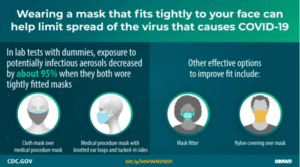
Fourteen states and the District of Columbia had universal masking mandates as of February 1, 2021. Masks are also now required on planes, buses, trains, and other public transportation in the United States.
To make sure your mask fits properly, the CDC recommends:
- Choose a mask with a wire you can bend over your nose to fit it closely to your face (this prevents air from leaking out from the top of the mask).
- Use a mask fitter or brace over your disposable or cloth mask to prevent air leakage around the edges.
- Make sure no air flows out from near your eyes or the sides of the mask — if the mask fits well, you’ll feel warm air coming through the front of the mask and may be able to see the mask move in and out as you breathe.
- Pick a mask that has multiple layers of fabric or wear one disposable mask underneath a cloth mask, so that the cloth mask pushes the edges of the disposable one against your face.
- Knotting the ear loops of a 3-ply face mask at the edge of the mask and folding and tucking the unneeded material under the edges (here’s a video on how to do it).
The CDC advises against combining two disposable masks, since they’re not designed to fit tightly and wearing more than one will not improve the fit. If you do have a KN95 mask, don’t wear it with any other mask — those should be used alone.
Get Free Coronavirus Support for Chronic Illness Patients
Join the Global Healthy Living Foundation’s free COVID-19 Support Program for chronic illness patients and their families. We will be providing updated information, community support, and other resources tailored specifically to your health and safety. Join now.
Tags: Coronavirus
Double Masks Offer Significantly Better Protection, CDC Study Finds
Upgrading your mask can really make a big difference, according to a study published Wednesday by the Centers for Disease Control and Prevention.
Wearing a double mask or fitting a single mask more closely on the face substantially reduces the risk of infection with the Covid-19 virus, the study, published in the agency’s Morbidity and Mortality Weekly Report, found.
In a series of laboratory experiments using headforms and machines to generate aerosols, the CDC found that wearing a three-ply cloth mask over a three-ply medical or surgical mask blocked 92.5% of particles from a cough.
That was much more effective than a single mask. A surgical mask alone blocked cough particles by 42%, and a cloth mask blocked them by 44.3%.
Many medical and engineering experts say people need to upgrade their masksbecause new variants of the virus are spreading around the country, particularly one that is significantly more transmissible than the currently most common strain. Other studies have shown benefits from wearing double masks or using mask fitters, devices which tighten the fit.
Still other experts say that people should wear N95 masks, which are used primarily in hospitals and are certified to filter out at least 95% of small particles.
The CDC is trying to accomplish two goals: convince people to wear a mask at all–since many aren’t doing that currently–and offer options on its website that can help them improve or find a good fit, said John Brooks, chief medical officer of the agency’s Covid-19 response.
“Masking is one of our most potent means for not only the epidemic and its effects on human health and the economy, but also for slowing viral evolution,” he said. “We are looking at all the ways we can enhance our prevention measures.”
It isn’t known whether the performance of single or double masks is different against the new variants, Dr. Brooks said. “It’s the same virus, so the measures should work,” he said. “What we don’t know is how effectively they will work.”
In the lab experiments, the double mask was also more protective against aerosols from breathing. It blocked 83% of aerosols emitted during 15 minutes of quiet breathing by an unmasked headform in a small room. The protection was 96.4% when the other person in the room was also wearing a double mask or a close-fitting single mask, the study found.
The CDC also tested the effectiveness of a medical or surgical mask that was better fitted by tying knots in the ear loops and tucking the sides in close to the face. Wearing that mask blocked 64.5% of aerosols emitted by the other headform, which was unmasked, and 95.9% of the particles when the headform was masked.
“Whatever we can do to improve the performance of masks right now will speed our control of this pandemic,” Dr. Brooks said.
Should You Be Double Masking?
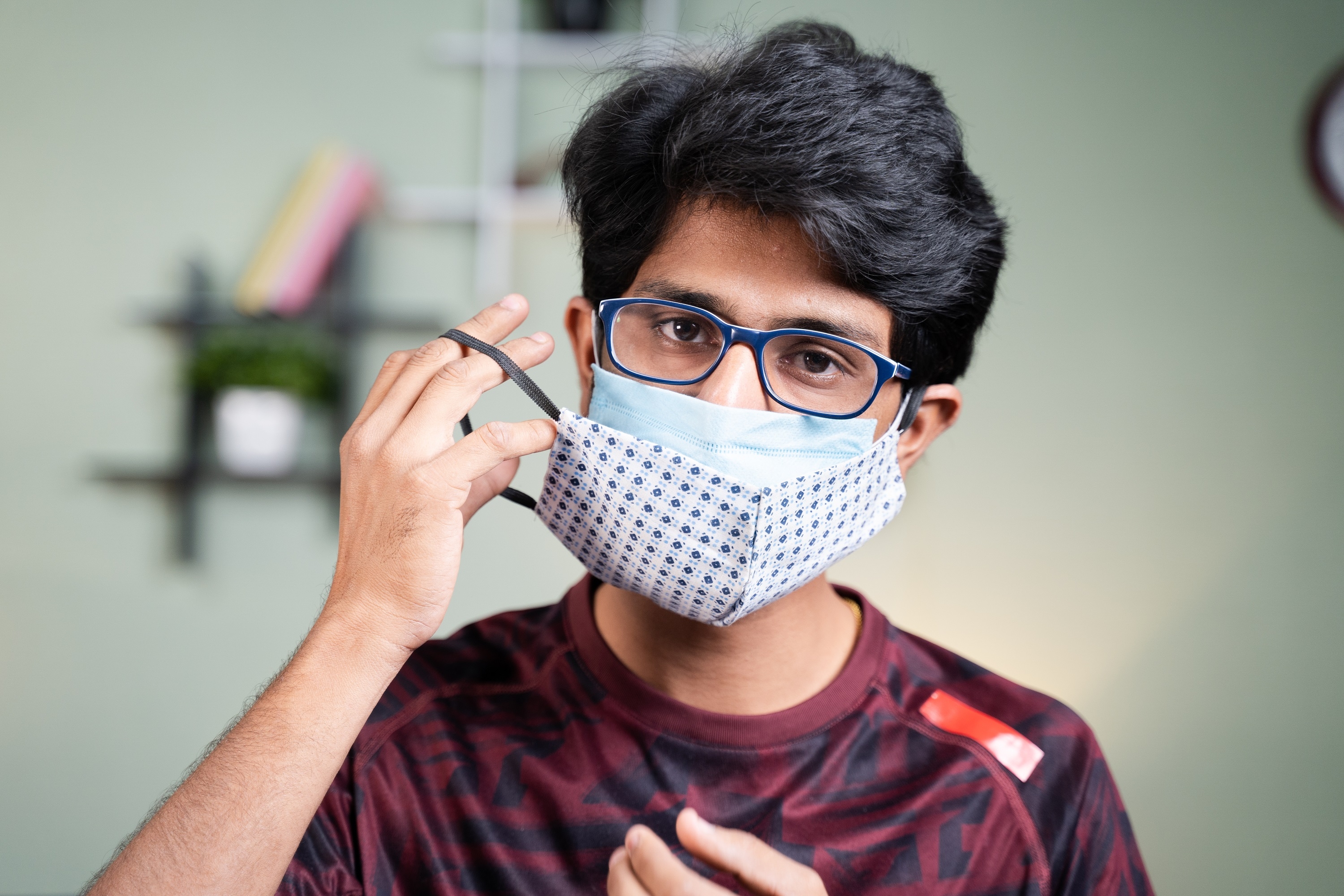
With the recent spread of new coronavirus variants, some people have begun wearing two masks at the same time — double masking. On February 10, the Centers for Disease Control and Prevention (CDC) released new guidance that confirmed that wearing well-fitted masks or wearing two masks offers added protection. “I think it’s a good time to think about the quality of masks for the public in general, especially with the reports around the new variants and increased transmissibility,” says Dr. Matthew Simon, associate hospital epidemiologist and assistant attending physician at NewYork-Presbyterian/Weill Cornell Medical Center. “The variants have obviously gotten everyone’s attention and increased interest in enhancing efforts to prevent transmission of COVID-19.”
Health Matters spoke with Dr. Simon, an assistant professor of medicine in the Division of Infectious Diseases at Weill Cornell Medicine, to understand the different kinds of masks and why it might make sense to start double masking.
Is double masking a good idea?
Dr. Simon: Let’s start off with one key point, and that is: Any mask or face covering is better than no mask or face covering. Data has proved that. In terms of double masking, the CDC now lists it as one way to improve protection from the virus, and some leaders, such as Dr. Anthony Fauci, the nation’s top infectious disease expert, have said they often double mask. If worn correctly, two masks can improve mask fit and serve as an additional barrier to filter infectious particles. Recent laboratory-based experiments performed on dummies have shown that exposure to potentially infectious small particles (aerosols) decreased by about 96% when both dummies were double masked.
Also, it’s important to remember that just because someone is wearing two masks, they should not forget about all the other important behaviors to prevent transmission, like social distancing, avoiding crowded indoor environments when possible, and hand hygiene.
What makes a face mask high-quality?
The two most important characteristics that people should look for in a good, high-quality face mask are the fit and filtration. The fit prevents air from leaking around the edges of the mask, and the filtration blocks potentially infectious respiratory droplets. If it’s a cloth mask, it should be made of tightly woven fabric, like cotton or a cotton blend, with a high thread count, and have at least two layers. This allows the mask to effectively block or filter infectious particles. The mask should fit snugly so that it covers the face and mouth and extends below the chin. Ideally, it should be breathable and comfortable too, because you have to be able to wear it and not worry about readjusting or taking it off and putting it back on.
A few options that the CDC now recommends to improve mask fit include wearing a mask with a nose wire, using a mask fitter or brace, or, for disposable masks, knotting and tucking the ear loops at the edge of the mask. This knotting and tucking method was also evaluated in the recent study with laboratory dummies and also found to be highly effective at reducing exposure to potentially infectious aerosols. One way to check the fit of the mask is to cup your hands around the outside edges of the mask and breathe in/out several times, checking to see if air leaks out the sides or near your eyes.
What about medical-grade masks, like ASTM Level 3 and KN95 masks?
ASTM Level 3 masks are considered medical-grade masks and — like the N95 respirator masks — they should still be reserved for healthcare workers. KN95 masks, which are available for public use, have a similar design to N95 masks and may have a high level of protection. However, there have been issues with counterfeit and quality standards. The Food and Drug Administration lists certain KN95s that have been evaluated and passed quality standards, which is worth taking a look at before purchasing.
What are some ways to double mask or improve the filtration of a cloth mask?
The recommended way to double mask is to wear a disposable mask underneath with a cloth face mask fitted on top of it. This technique allows the disposable mask to act as a filter, and the cloth mask provides an additional layer of filtration while improving the fit of the disposable mask.
Another recommended option is to wear a three-layer mask: A cloth mask made of a flexible, tightly woven fabric with a nonwoven high-efficiency filter material sandwiched between them the two cloth layers. Researchers suggest that a filter that’s akin to a vacuum bag filter, or nonwoven polymer propylene, is highly effective at filtering small particles that are the size we worry about with COVID-19. A lot of the cloth masks have pockets where you can insert a filter. So a well-fitted cloth face mask with an added filter is thought to be equivalent to double masking.
Importantly, it is not recommended to wear two disposable masks on top of each other.
